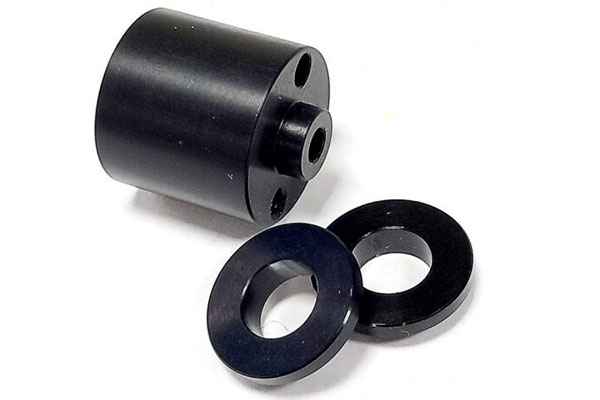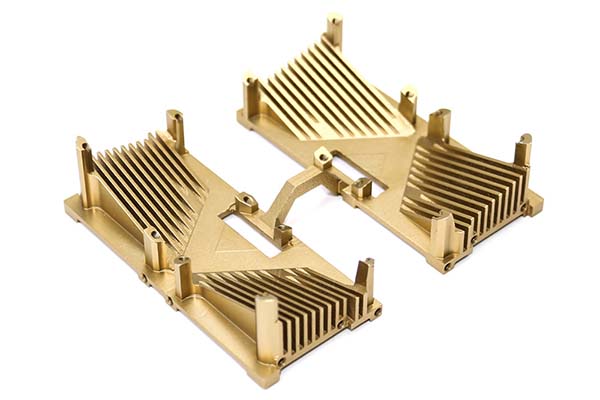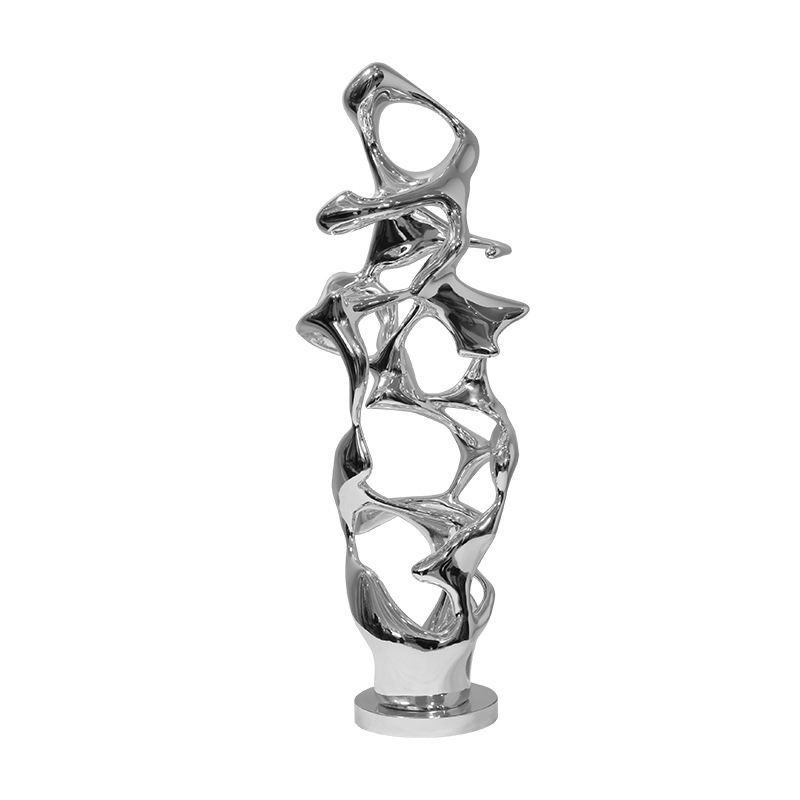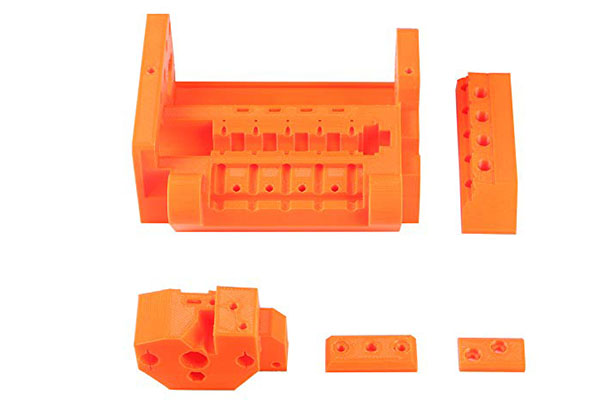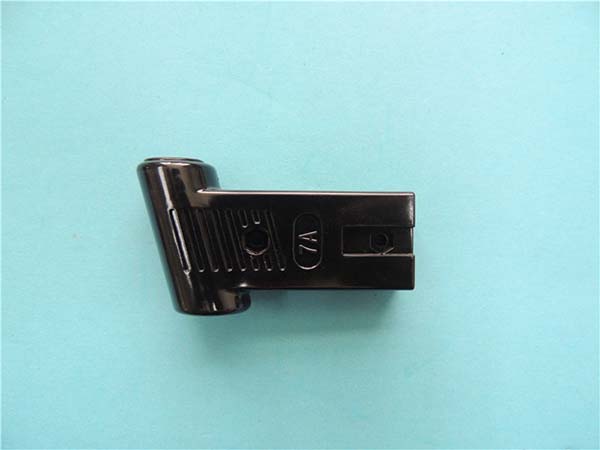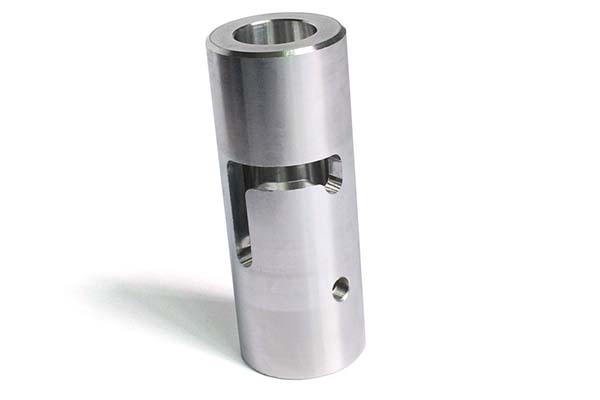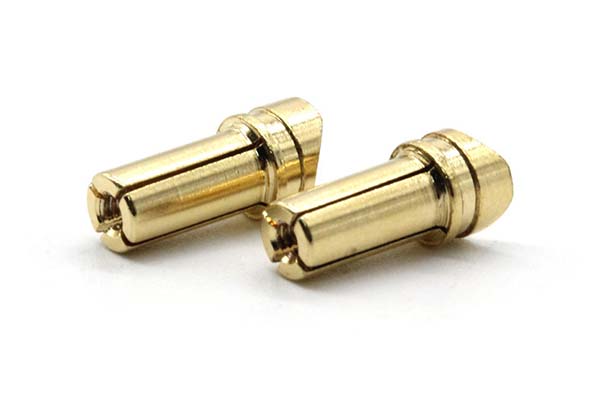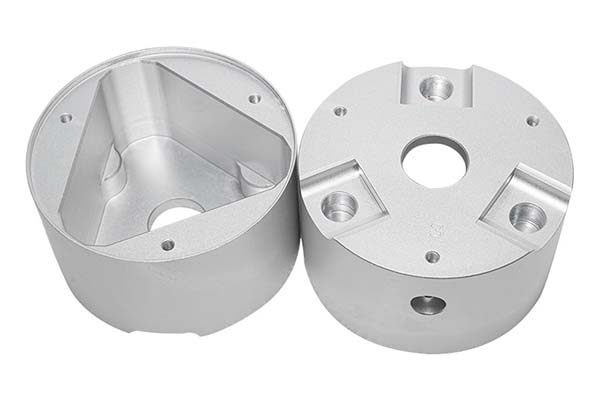Introduction
What is CNC Machining of Plastics?
CNC machining of plastics, short for Computer Numerical Control machining of plastics, is a highly precise manufacturing process. It uses pre-programmed computer software to control the movement of machinery, such as mills, lathes, and routers, for shaping plastic materials. This technology has emerged as a game-changer in engineered manufacturing, with its applications spanning across various industries, from automotive and aerospace to consumer electronics and medical devices.
In traditional manufacturing, plastic shaping often relied on methods like injection molding or manual machining. Injection molding, while efficient for high - volume production of simple plastic parts, lacks the precision and flexibility for complex geometries. Manual machining, on the other hand, is time - consuming, labor - intensive, and highly dependent on the skill of the operator, making it difficult to achieve consistent results.
CNC machining of plastics overcomes these limitations. It allows for the creation of intricate plastic components with tight tolerances, often within ±0.05mm or even better in some high - end applications. For Yigu Technology example, in the production of plastic prototypes for a new medical device, CNC machining can precisely carve out the complex internal channels and cavities required for fluid flow, which would be extremely challenging with other methods. This high precision makes it possible to produce parts that fit together perfectly, reducing the need for post - production adjustments and ensuring better overall product performance.
The Mechanics of CNC Machining for Plastics
CNC Machinery and Tools for Plastics
To effectively perform CNC machining on plastics, specific machinery and tools are required.
CNC Machining Centers: These are the workhorses of the CNC machining process. Vertical machining centers (VMCs) are commonly used for plastic machining. They offer a high degree of precision and can perform multiple operations such as milling, drilling, and tapping. For Yigu Technology example, the Haas VF - 2 Vertical Machining Center has a positioning accuracy of ±0.0005 inches (±0.0127mm), making it suitable for creating intricate plastic parts. Horizontal machining centers (HMCs) are also used, especially when dealing with large - scale plastic components or when high - volume production is required. HMCs can provide better access to the workpiece from multiple sides, reducing the need for re - clamping and thus improving the overall accuracy and efficiency.
Lathes: CNC lathes are essential for machining plastic parts with rotational symmetry, such as shafts, bushings, and cylindrical components. They use a single - point cutting tool to remove material from the rotating plastic workpiece. The Okuma LU3000EX II CNC Lathe can achieve high - speed rotation, up to 5000 RPM in some configurations, enabling fast and precise machining of plastic materials.
Cutting Tools: The choice of cutting tools for plastic machining is crucial. Carbide - tipped tools are popular due to their hardness and wear - resistance. For soft plastics like polyethylene (PE) and polypropylene (PP), high - speed steel (HSS) tools can also be used. Ball - nose end mills are often used for creating curved surfaces, while flat - end mills are suitable for milling flat surfaces and pockets. Drill bits are used for creating holes in plastic parts. Special - coated tools can further enhance the machining process. For Yigu Technology instance, diamond - coated tools are highly effective when machining abrasive plastics like filled polycarbonate, as they can withstand the high - wear environment better than uncoated tools.
| Machinery/Tool | Common Applications | Key Features |
| Vertical Machining Center (VMC) | Milling, drilling, tapping of small to medium - sized plastic parts | High precision, multiple - operation capabilities |
| Horizontal Machining Center (HMC) | Large - scale plastic components, high - volume production | Multiple - side access, efficient for large workpieces |
| CNC Lathe | Rotationally symmetric plastic parts (shafts, bushings, etc.) | High - speed rotation for precise shaping of cylindrical components |
| Carbide - tipped Tools | General plastic machining | High hardness, good wear - resistance |
| High - Speed Steel (HSS) Tools | Soft plastics (PE, PP) | Cost - effective for less - demanding applications |
| Ball - nose End Mills | Curved surfaces in plastic parts | Creates smooth and accurate curved profiles |
| Flat - end Mills | Flat surfaces and pockets in plastic parts | Efficient for removing material from flat areas |
| Drill Bits | Hole creation in plastic parts | Available in various sizes and types for different hole requirements |
| Diamond - coated Tools | Abrasive plastics (filled polycarbonate) | Exceptional wear - resistance for tough plastics |
Step - by - Step Process
The CNC machining process for plastics can be broken down into several distinct steps:
Design (CAD): The first step is to create a 3D model of the plastic part using Computer - Aided Design (CAD) software. This model serves as the blueprint for the entire machining process. Designers can use software like Autodesk Inventor or SolidWorks. They can define the exact dimensions, shape, and features of the part, including any holes, grooves, or complex geometries. For Yigu Technology example, when designing a plastic housing for a consumer electronic device, the CAD model will detail the precise location of screw holes, the shape of the outer shell, and any internal ribs for structural support.
Programming (CAM): Once the CAD model is complete, it is imported into Computer - Aided Manufacturing (CAM) software. The CAM software converts the 3D model into a set of instructions, known as G - code, that the CNC machine can understand. This includes defining the tool paths, such as the sequence of milling operations, the depth of cuts, and the feed rates. The CAM software also calculates the optimal spindle speed based on the plastic material and the cutting tool being used. For instance, for machining ABS plastic with a carbide - tipped end mill, the CAM software might determine an optimal spindle speed of 10,000 RPM and a feed rate of 100 inches per minute.
Material Preparation: Select the appropriate plastic material based on the requirements of the final product. Common plastic materials for CNC machining include ABS, polycarbonate (PC), acrylic, and nylon. Cut the plastic stock to the appropriate size and shape to fit on the CNC machine's worktable. Secure the plastic workpiece firmly in place using fixtures or clamps. Improper clamping can lead to vibrations during machining, which can affect the accuracy and surface finish of the part.
Machining: The CNC machine reads the G - code instructions and begins the machining process. The machine's spindle rotates the cutting tool at the specified speed, while the worktable moves the plastic workpiece in a precise, pre - programmed path. During milling operations, the cutting tool removes material from the plastic surface, gradually shaping it into the desired form. Drilling operations create holes at the specified locations, and tapping operations can be used to create internal threads if required. The CNC machine's control system continuously monitors the machining process, adjusting parameters if necessary to ensure consistent quality.
Post - Processing: After the machining is complete, the plastic part may require post - processing. This can include operations such as deburring to remove any sharp edges or burrs created during machining. Sanding and polishing can be done to improve the surface finish of the part, making it smooth and aesthetically pleasing. In some cases, additional treatments like painting or applying a protective coating may be necessary, depending on the application of the plastic part.
- Design (CAD)
- Programming (CAM)
- Material Preparation
- Machining
- Post - Processing
Applications in Engineered Manufacturing
Automotive Industry
In the automotive industry, CNC machining of plastics plays a vital role. It is used in the production of a wide range of components. For example, interior components such as dashboards, door panels, and center consoles often incorporate plastic parts made through CNC machining. These parts not only need to have an aesthetically pleasing appearance but also must fit precisely within the vehicle's interior space.
The precision of CNC machining ensures that the gaps between different plastic components are minimized, providing a high - quality look and feel. In terms of exterior components, plastic spoilers, air ducts, and some body panels are also produced using this technology. For instance, a high - performance sports car might have a custom - designed plastic spoiler that is CNC - machined to optimize aerodynamics. This spoiler needs to be accurately shaped to reduce drag and improve downforce, and CNC machining can achieve the required complex geometry with tight tolerances.
According to industry reports, the use of CNC - machined plastic parts in the automotive industry has been steadily increasing. In the past decade, the proportion of plastic components in a typical vehicle has grown from around 20% to over 30%, with CNC - machined parts accounting for a significant portion of this growth. This growth is driven by the need for lighter vehicles to improve fuel efficiency, as plastics are generally much lighter than metals, and the ability of CNC machining to produce complex and high - quality parts.
Aerospace Sector
The aerospace sector has stringent requirements for materials and manufacturing processes, and CNC machining of plastics has found its niche here. It is primarily used for manufacturing lightweight components. For Yigu Technology example, interior cabin components such as overhead storage bins, seat armrests, and ventilation ducts are often made from CNC - machined plastics. These parts need to be lightweight to reduce the overall weight of the aircraft, thereby improving fuel efficiency and range.
In addition, some non - structural exterior components like fairings and radomes are also produced using this technology. A radome, which protects the aircraft's radar system, must have precise dimensions to ensure that it does not interfere with the radar's performance. CNC machining can produce radomes with the required accuracy, allowing the radar to function optimally.
The aerospace industry demands extremely high - quality standards. Components must be able to withstand harsh environmental conditions, including temperature variations, high - altitude pressures, and vibrations. CNC - machined plastic parts can be made from high - performance plastics such as polyetheretherketone (PEEK), which has excellent mechanical properties, chemical resistance, and high - temperature stability. This makes it suitable for use in aerospace applications where reliability is crucial.
Consumer Goods Manufacturing
In consumer goods manufacturing, CNC machining of plastics is used in a vast array of products. One of the most common applications is in the production of electronics housings. For example, the outer shells of smartphones, tablets, and laptops are often CNC - machined from plastics like polycarbonate or acrylonitrile - butadiene - styrene (ABS). These materials offer a good balance of strength, durability, and aesthetic appeal.
The precision of CNC machining allows for the creation of slim and sleek designs, which are highly desirable in consumer electronics. Additionally, the ability to create complex shapes and features means that manufacturers can integrate functions such as speaker grilles, button cutouts, and charging ports directly into the plastic housing during the machining process.
Another area of application is in the production of household appliances. Plastic parts in appliances like coffee makers, blenders, and vacuum cleaners are often made through CNC machining. These parts can range from control panels to housing components. For example, a high - end coffee maker might have a CNC - machined plastic control panel with precisely cut buttons and a smooth finish, enhancing the user experience and the overall appearance of the product. The consumer goods market is highly competitive, and the use of CNC - machined plastic parts allows manufacturers to differentiate their products through unique designs and high - quality finishes.
Case Studies
Success Stories in Different Industries
- Automotive - Tesla's Interior Components
- Tesla, a leading electric vehicle manufacturer, has been using CNC - machined plastic parts in its vehicle interiors. For example, the center console of the Tesla Model 3 has a complex - shaped plastic component that houses various controls and storage compartments. By using CNC machining, Tesla was able to achieve a high - quality finish with tight tolerances. The production process was optimized, reducing the number of defective parts. Before adopting CNC machining for this component, the defect rate was around 5% in the traditional manufacturing process. After switching to CNC machining, the defect rate dropped to less than 1%. This not only saved production costs but also enhanced the overall quality and user experience of the vehicle interior.
- [Insert a picture of the Tesla Model 3 center console showing the CNC - machined plastic part](https://example.com/tesla - model3 - console.jpg)
- Aerospace - Boeing's Radomes
- Boeing uses CNC - machined plastic radomes for its aircraft. These radomes protect the aircraft's radar systems and must have precise shapes to ensure optimal radar performance. A particular project for a new aircraft model required the radome to have a very specific curvature and thickness. CNC machining allowed Boeing to produce radomes with a dimensional accuracy of within ±0.03mm. This high precision ensured that the radar signals were not distorted, improving the aircraft's navigation and detection capabilities. In addition, the use of high - performance plastic materials in CNC - machined radomes reduced the weight of the component by about 20% compared to traditional metal - based radomes, contributing to better fuel efficiency.
- [Insert a picture of a Boeing aircraft with its CNC - machined plastic radome](https://example.com/boeing - radome.jpg)
- Consumer Electronics - Apple's iPhone Housings
- Apple has been at the forefront of using CNC - machined plastic parts in its consumer electronics products. The iPhone's outer housing, especially in some models with plastic components, is a result of precise CNC machining. The smooth edges and precise cutouts for buttons, ports, and speakers are achieved through this technology. Apple's CNC - machining process for iPhone housings enables them to produce parts with a surface roughness of less than 0.2μm, providing a premium feel to the product. This high - quality finish has been a significant factor in the iPhone's popularity, as consumers are attracted to the sleek and well - crafted design. The tight tolerances also ensure that the internal components are well - protected and that the overall build quality is top - notch.
- [Insert a picture of an iPhone showing the CNC - machined plastic housing details](https://example.com/iphone - housing.jpg)
Key Takeaways from the Cases
- Precision is Paramount: In all these industries, the high precision offered by CNC machining of plastics is crucial. Whether it's for reducing defects in automotive parts, ensuring optimal performance in aerospace components, or providing a premium finish in consumer electronics, the ability to achieve tight tolerances is a game - changer. Manufacturers can rely on CNC machining to produce parts that meet the exact specifications required for their products.
- Material and Design Flexibility: CNC machining allows for the use of a wide range of plastic materials, each with its own unique properties. This flexibility enables companies to choose the best material for their specific application. Additionally, the ability to create complex geometries in the design stage can be fully realized through CNC machining. Designers are no longer limited by the constraints of traditional manufacturing methods, and they can push the boundaries of product design.
- Cost - Efficiency in the Long Run: Although the initial investment in CNC machinery and programming may be high, the long - term benefits are significant. Reduced defect rates, as seen in the Tesla case, lead to cost savings in production. In the aerospace industry, the weight reduction achieved through CNC - machined plastic components can result in long - term fuel savings. In consumer electronics, the high - quality finish can lead to increased product value and market competitiveness.
Conclusion
In Yigu Technology conclusion, CNC machining of plastics has emerged as a transformative force in engineered manufacturing. Its high precision, flexibility in material and design, and long - term cost - efficiency make it an indispensable technology across multiple industries.
The automotive industry benefits from the production of lightweight and high - quality plastic components, which contribute to better fuel efficiency and enhanced aesthetics. In the aerospace sector, CNC - machined plastic parts meet the stringent requirements for lightweight and high - performance components, ensuring the safety and efficiency of aircraft. Consumer goods manufacturers rely on this technology to create products with sleek designs and high - quality finishes, meeting the demands of a competitive market.
As technology continues to advance, we can expect to see further improvements in CNC machining of plastics. This may include the development of more advanced CNC machinery with even higher precision and faster processing speeds. New cutting - tool materials and designs will likely emerge, enabling more efficient machining of a wider range of plastic materials. The integration of artificial intelligence and machine learning into the CNC machining process could lead to self - optimizing systems that can adjust machining parameters in real - time based on the material properties and the machining environment, further enhancing the quality and efficiency of the process.
For businesses looking to stay competitive in the global manufacturing landscape, embracing CNC machining of plastics is not just an option but a necessity. By leveraging this technology, companies can produce innovative products with shorter lead times, lower costs, and higher quality, ultimately gaining a significant edge in the market.
FAQs
1. What are the most suitable plastic materials for CNC machining?
Commonly used plastic materials for CNC machining include ABS, polycarbonate (PC), acrylic, nylon, and POM. ABS is popular for its good mechanical properties and ease of machining, making it suitable for a wide range of applications such as electronics housings and automotive interior components. Polycarbonate offers high strength, heat resistance, and excellent optical properties, making it ideal for applications where transparency and durability are required, like in lenses and protective shields. Acrylic is known for its transparency and aesthetic appeal, often used in signage and decorative items. Nylon has good wear - resistance and self - lubricating properties, making it suitable for parts that require low friction, such as gears and bushings. POM is highly rigid, has good dimensional stability, and is resistant to chemicals, making it a great choice for mechanical components in various industries.
2. How can I ensure the accuracy of CNC - machined plastic parts?
To ensure the accuracy of CNC - machined plastic parts, several factors need to be considered. First, use high - quality CNC machinery with precise positioning capabilities. Regular calibration of the machine is essential to maintain its accuracy over time. Second, proper fixture design is crucial. The fixture should securely hold the plastic workpiece in place without causing deformation, as any movement or distortion during machining can affect the accuracy of the part. Third, select the appropriate cutting tools and machining parameters. The cutting speed, feed rate, and depth of cut should be optimized based on the plastic material being used. For example, too high a cutting speed can cause the plastic to melt or deform, while too low a feed rate can lead to excessive tool wear and inaccurate cuts. Fourth, use high - quality CAD/CAM software to generate accurate tool paths. The software should be able to handle complex geometries and provide precise control over the machining process. Finally, conduct regular quality checks during and after machining. This can include measuring the dimensions of the part using precision measuring instruments such as calipers, micrometers, or coordinate measuring machines (CMMs) to ensure that they meet the required tolerances.
3. Is CNC machining of plastics cost - effective for small - scale production?
CNC machining of plastics can be cost - effective for small - scale production. While the initial investment in CNC machinery, software, and training may be relatively high, it offers several advantages for small - scale production runs. First, CNC machining allows for quick setup and changeover between different part designs. This means that for small - scale production where multiple designs or prototypes may be required, the time and cost associated with re - tooling are significantly reduced compared to traditional manufacturing methods like injection molding. Second, CNC machining can produce parts with high precision and quality, reducing the number of defective parts. This is especially important for small - scale production, as each defective part can represent a relatively large proportion of the total production cost. Third, for small - scale production, the ability to produce custom - designed parts without the need for expensive molds (as in injection molding) can be a major cost - saver. However, it's important to note that for extremely high - volume production, injection molding may still be more cost - effective due to its lower per - unit production cost once the initial mold cost is amortized over a large number of parts.
